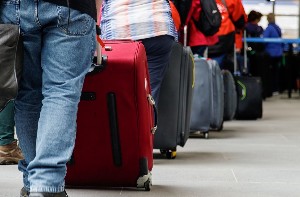A record 22% of investors are finding it easier, compared to 8% saying it was hard in December last year. The higher figure is up from 17% in June.
Alexander says the rental market has shifted substantially this year, reflecting strong population growth from the migration boom and the shifting of some properties back to servicing tourists and foreign students.
However, migration can be a double-edged sword. While it provides more workers, skllls and capital to the economy, it can put pressure on housing and infrastructure. These can boost inflation which is at six per cent and only slowly falling.
Net immigration flows have increased spectacularly since the beginning of the year as permanent and long-term arrivals surged into the country.
In the year to June, migration from all countries rose to 86,800 – made up of a net gain of 121,000 non-New Zealand citizens and a net migration loss of 34,800 New Zealand citizens. It was the biggest net migration loss since the year to April 2013.
While there have been figures bandied about of 100,000 migrant arrivals this year, ASB expects immigration inflows to cool to 30,000 by mid-2026.
ASB chief economist Nick Tuffley says net immigration is a major swing variable in the economy. “Typically, sizeable increases in immigration boosts domestic demand and the housing market.”
People come in and they need somewhere to live immediately. Even if they are not buying, they’re renting. It’s adding demand to the housing stock.
According to some economists, the housing response is never strong enough – just as a big population surge is happening, building consents are dropping, building companies are pulling out of projects because of rising construction costs, high interest rates and a lack of sales.
For example, Auckland’s apartment market was booming two years ago, but, real estate agency CBRE’s latest report on the sector shows there were just four new saleable complexes launched between June last year and August this year, all for owners at the high-end of the market.
This is a noticeable turnaround from the beginning of this year, when three complexes were launched at the $/m2 bottom end of the market, where investors/landlords usually buy.
Just over 1,615 apartments have been completed so far this year and a further 1,854 are expected to be finished by the end of the year, but off-the-plan sales have plummeted to 55 for the latest quarter. CBRE says the gap is widening between unsold stock and presold stock, with more unsold units than presold units.
In the much touted build-to-rent sector, new projects have not been enough to offset recent completions, which has reduced the pipeline.
Meanwhile, the final roof slab has been poured for Kiwi Property’s 295 apartments in its $200 million build-to-rent complex across three separate buildings, up to twelve levels at Sylvia Park, Mt Wellington.





 Search
Search
